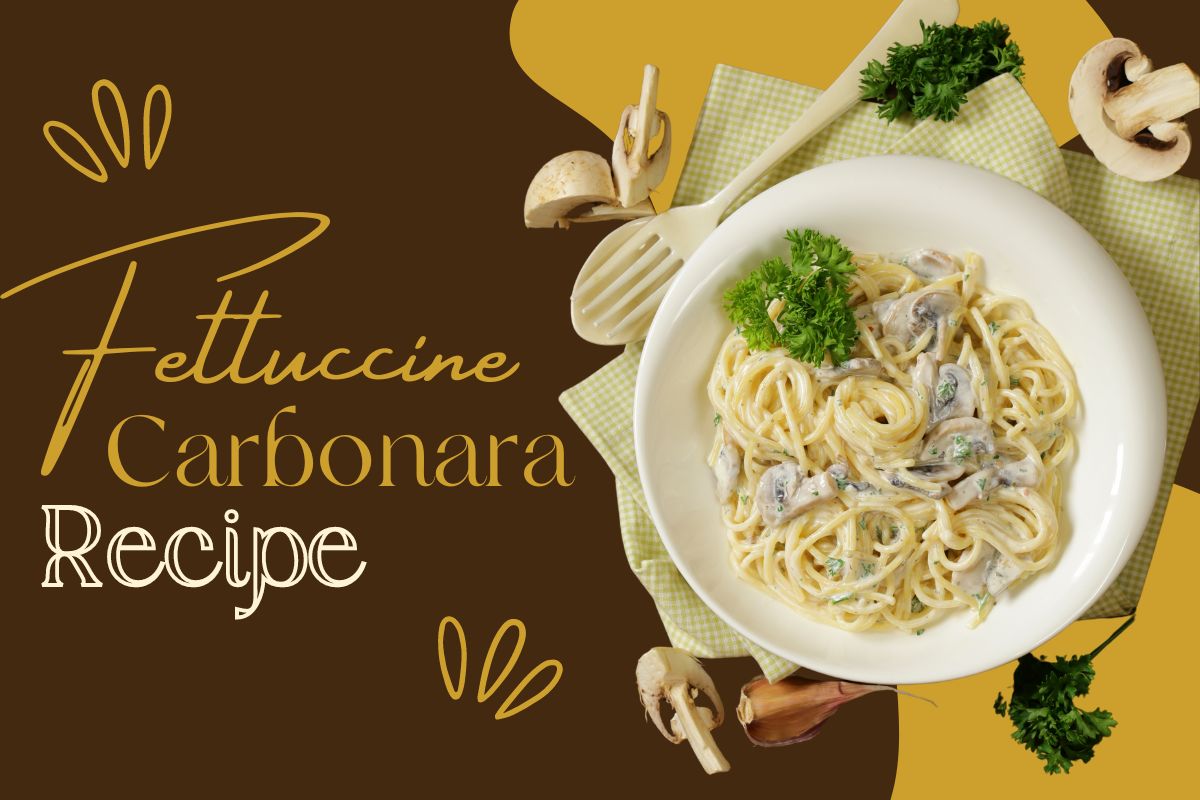Fettuccine carbonara, a seemingly simple dish of pasta, eggs, cheese, and cured pork, has captured hearts (and stomachs) worldwide. Its richness, simplicity, and versatility make it a timeless classic. But achieving that perfect balance of creamy sauce, toothsome pasta, and savory richness can be trickier than it seems. Fear not, fellow carbonara enthusiast! This deep dive equips you with the knowledge to craft a restaurant-worthy dish in your own kitchen.
Ingredients
- Pasta: Fettuccine is the traditional choice, its long, flat strands offering a perfect platform for the sauce. However, other long pastas like tagliatelle or bucatini work well too.
- Eggs: The heart of the creamy sauce. Use fresh, high-quality eggs for the best flavor and texture.
- Cheese: Pecorino Romano, a salty sheep’s milk cheese, is the traditional choice. You can use Parmigiano-Reggiano, but avoid pre-shredded cheeses, which lack flavor and can clump.
- Cured Pork: Pancetta, with its milder saltiness, is preferred by some. Bacon offers a smokier option.
- Olive Oil: Extra virgin olive oil adds a touch of richness and healthy fats.
The Carbonara Creed: Essential Tips
- Respect the Ratio: The magic of carbonara lies in its delicate balance. Aim for 2 large egg yolks per whole egg, 1 ounce of cheese per egg, and enough cured pork to complement without overpowering.
- Embrace the Power of Pasta Water: Reserve about 1 cup of pasta water before draining. This starchy water acts like a magic potion, emulsifying the sauce and creating a silky texture when combined with the eggs and cheese.
- Eggs Need Nurturing: Temper the eggs by slowly whisking in some hot pasta water. This prevents them from scrambling when combined with the hot pan.
- Low and Slow is the Way to Go: Avoid high heat when incorporating the cheese and egg mixture. Use the residual heat from the pasta and reserved pasta water to gently create a creamy sauce.
- Freshly Cracked Black Pepper is Your Friend: A generous amount of freshly cracked black pepper adds depth and balances the richness of the dish.
The Carbonara Conundrum: Mistakes to Avoid
- Overcooked Pasta: Aim for al dente, meaning “to the tooth.” Pasta should have a slight bite. Mushy pasta leads to a sad, sticky carbonara.
- Overcooking the Eggs: Be cautious when adding the egg and cheese mixture to the hot pasta. If the pasta is too hot, it can scramble the eggs instead of creating a creamy sauce. Remove the pasta from the heat before adding the eggs and toss quickly to prevent this from happening.
- Skipping the Pancetta or Guanciale: While bacon can be substituted in a pinch, pancetta or guanciale provides a unique flavor that is essential to authentic carbonara. Try to use one of these cured pork products for the best results.
- Cheese Frenzy: Resist the urge to add excessive cheese. Too much cheese can make the sauce greasy and overwhelm the other flavors.
- Cream Confusion: Traditional carbonara doesn’t use cream. It might seem like a shortcut, but cream dilutes the flavor and alters the texture.
- Fear of Fat: Don’t skimp on the good stuff! High-quality cheese, cured pork, and olive oil add essential flavor and richness.
- The “Throw-It-All-In” Trap: Resist the urge to dump everything together. The key to a successful carbonara is a gradual layering of flavors.
The Art of Plating: Carbonara Chic
- Warm Plates: Use warm plates to prevent the pasta from cooling down too quickly.
- Reserve Some Magic: Set aside a little grated cheese and freshly cracked black pepper for a final flourish at the table.
- Fresh Herbs for a Touch of Green: Chopped fresh parsley or chives add a pop of color and freshness.
Variations on a Classic: Exploring New Horizons
While tradition reigns supreme, there’s room for exploration. Here are some ideas to personalize your carbonara:
- Spicy Carbonara: Add a pinch of red pepper flakes for a touch of heat.
- Vegetable Boost: Sauteed mushrooms, asparagus, or peas can add another dimension of flavor and texture.
- Black Truffle Shavings: For a luxurious touch, add a few shavings of black truffle at the end.
Can you substitute pancetta?
Absolutely! Bacon is a readily available option, adding a smokier dimension to the dish. Just be mindful that bacon tends to be saltier than pancetta, so adjust the seasoning accordingly. Guanciale, cured pork cheek, is another option for the purists. Its intense flavor adds a luxurious depth to the carbonara, but it can be harder to find.
Can you substitute the pasta?
Fettuccine, with its long, flat strands, is the traditional choice. It offers a generous surface area for the sauce to adhere to. However, other long pasta like tagliatelle or bucatini work well too. The key is to choose a pasta that can hold its own against the robust sauce. Ultimately, the best pasta for your carbonara is the one you enjoy!
Conclusion:
Fettuccine carbonara is more than just a dish; it’s an experience. It’s the joy of simple, high-quality ingredients coming together to create pure culinary satisfaction. With a little knowledge and practice, you can transform your kitchen into a haven of creamy, cheesy goodness. So, grab your ingredients, fire up the stove, and embark on your own carbonara journey. With this Fettuccine Carbonara recipe, the reward is a dish that will have you yearning for more.
Tags: Creamy PastaFettuccine CarbonaraItalian CuisinePasta Perfection

